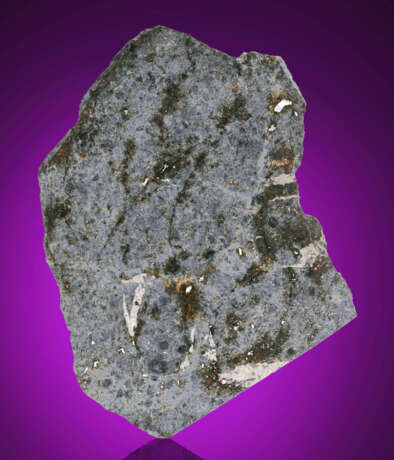ID 927060
Lot 69 | ENSISHEIM — THE OTHER THING THAT HAPPENED IN 1492
Estimate value
$ 4 000 – 6 000
Thus begins a 16th Century document describing one of the other newsworthy events of 1492. The record continues, “It was surely a sign from God, such as had never been seen before, or read or written about.”
Indeed, the Ensisheim fireball created a great deal of commotion. It fell five weeks after Columbus landed in the West Indies — at a time where it was not believed rocks fell out of the sky. Austria’s Emperor Maximillian is said to have interpreted the Ensisheim event as a divine sign to declare war on France — a decision that turned out to be rather provident. He gained three provinces and retrieved his daughter who had taken up with the French King. Meanwhile, back in the walled town of Ensisheim, the mysterious stone had been carried to the church and tethered to a chain in a dungeon — ostensibly to prevent it from departing the same way it arrived.
The main mass can be seen in the same church today. This partial slice with a natural surface rim on two edges was deaccessioned by The Natural History Museum in London; it showcases Ensisheim’s characteristic blue-gray highly recrystallized matrix. During heating on its parent asteroid, chondrules completely melted and blended together; its original texture was vastly altered as indicated by the “6” in its L6 classification (The “L” imparts low metal.) The clasts seen illustrate the rock is a breccia, made up of broken rock fragments that resided in the near-surface environment of its parent asteroid. Ensisheim is Europe’s largest as well as oldest witnessed fall and will forever be among the most historic — and difficult to obtain — meteorites known, and this is an exemplary partial slice.
Christie's would like to thank Dr. Alan E. Rubin at the Department of Earth, Planetary, and Space Sciences, University of California, Los Angeles for his assistance in preparing this catalogue.
57 x 51 x 1mm (2.25 x 2 x 0.1 in.) and 9.23 grams
| Art style: | Aestheticism |
|---|---|
| Category: | Meteorite |
| Art style: | Aestheticism |
|---|---|
| Category: | Meteorite |
| Address of auction |
CHRISTIE'S 20 Rockefeller Plaza 10020 New York USA | ||||||||||||||
|---|---|---|---|---|---|---|---|---|---|---|---|---|---|---|---|
| Preview |
| ||||||||||||||
| Phone | +1 212 636 2000 | ||||||||||||||
| Fax | +1 212 636 4930 | ||||||||||||||
| Conditions of purchase | Conditions of purchase | ||||||||||||||
| Shipping |
Postal service Courier service pickup by yourself | ||||||||||||||
| Payment methods |
Wire Transfer | ||||||||||||||
| Business hours | Business hours
|



